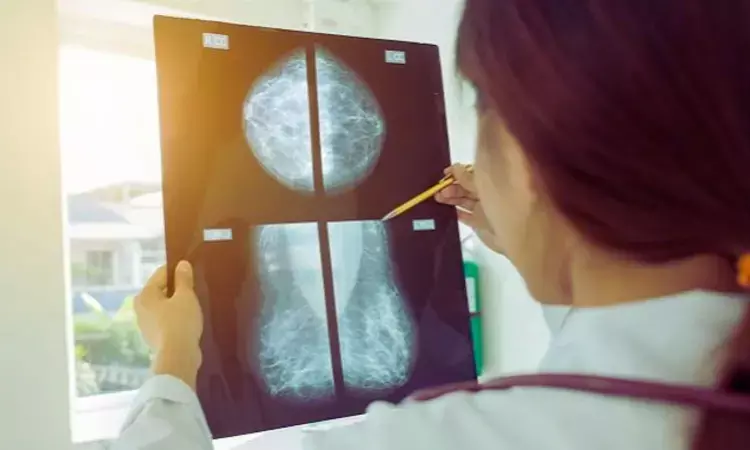- Home
- Medical news & Guidelines
- Anesthesiology
- Cardiology and CTVS
- Critical Care
- Dentistry
- Dermatology
- Diabetes and Endocrinology
- ENT
- Gastroenterology
- Medicine
- Nephrology
- Neurology
- Obstretics-Gynaecology
- Oncology
- Ophthalmology
- Orthopaedics
- Pediatrics-Neonatology
- Psychiatry
- Pulmonology
- Radiology
- Surgery
- Urology
- Laboratory Medicine
- Diet
- Nursing
- Paramedical
- Physiotherapy
- Health news
- Fact Check
- Bone Health Fact Check
- Brain Health Fact Check
- Cancer Related Fact Check
- Child Care Fact Check
- Dental and oral health fact check
- Diabetes and metabolic health fact check
- Diet and Nutrition Fact Check
- Eye and ENT Care Fact Check
- Fitness fact check
- Gut health fact check
- Heart health fact check
- Kidney health fact check
- Medical education fact check
- Men's health fact check
- Respiratory fact check
- Skin and hair care fact check
- Vaccine and Immunization fact check
- Women's health fact check
- AYUSH
- State News
- Andaman and Nicobar Islands
- Andhra Pradesh
- Arunachal Pradesh
- Assam
- Bihar
- Chandigarh
- Chattisgarh
- Dadra and Nagar Haveli
- Daman and Diu
- Delhi
- Goa
- Gujarat
- Haryana
- Himachal Pradesh
- Jammu & Kashmir
- Jharkhand
- Karnataka
- Kerala
- Ladakh
- Lakshadweep
- Madhya Pradesh
- Maharashtra
- Manipur
- Meghalaya
- Mizoram
- Nagaland
- Odisha
- Puducherry
- Punjab
- Rajasthan
- Sikkim
- Tamil Nadu
- Telangana
- Tripura
- Uttar Pradesh
- Uttrakhand
- West Bengal
- Medical Education
- Industry
Can detection of breast Arterial Calcification during mammography help Assess CV Risk in Women?

A recent study published in the American Journal of Preventive Cardiology highlighted a significant challenge in accurately stratifying cardiovascular (CV) risk in females. Traditional models often miss a substantial proportion of at-risk women, particularly the individuals without obvious symptoms or standard risk indicators. However, breast arterial calcifications (BAC) can be identified during routine mammography and have been emerged as independent prognosticators of cardiovascular risk. The study investigated how BAC interacts with coronary artery disease profiles as assessed by computed tomography (CT) by focusing on the implications of BAC 0 (absence of BAC) and its relationship with coronary artery calcification (CAC) scores, the severity of coronary stenosis, and the presence of high-risk plaques (HRP).
The study included a total of 443 consecutive female patients who underwent both mammography and coronary CT angiography (CTA) for clinical indications within a year. The patients were divided into 3 age groups: under 55 years, 55-65 years, and over 65 years. This research analyzed the prevalence of BAC 0 and its correlation with CAC scores, specifically the individuals greater than 300 Agatston Units (AU), the severity of coronary stenosis (defined as obstructive disease with >50% stenosis) and the presence of high-risk plaques.
The results revealed significant age-related differences in the prevalence of BAC 0. Younger women (under 55 years) with BAC 0 were highly unlikely to have a severe CAC score (>300 AU), with only 0.82% of these women falling into this high-risk category. However, this protective effect of BAC 0 diminishes with age. The prevalence of high CAC scores in the individuals with BAC 0 jumps significantly in women over 65, with a 16.58-fold increase in risk when compared to younger women. Women aged 55-65 also showed a marked increase in high CAC scores, with 12.1% affected.
When examining obstructive coronary disease, the study found that 18.2% of women with BAC 0 had significant coronary stenosis (>50% blockage). Again, this risk was age-dependent: 10.7% in women under 55, 14.7% in those aged 55-65, and 29.9% in women over 65 years. While BAC 0 seemed somewhat protective against severe CAC in younger women, it did not rule out the presence of obstructive coronary disease or high-risk plaques across all age groups. The correlation between BAC, CAC, and CAD-RADS (a scoring system for coronary artery disease severity) was weak, with no significant association between BAC and the presence of high-risk plaques.
The study illuminates that while BAC 0 may help rule out severe coronary calcification in women under 55, it does not reliably predict the absence of obstructive coronary disease or high-risk plaques in older women. Overall, this finding has important implications for primary prevention strategies by suggesting that reliance on BAC 0 alone in cardiovascular risk assessment may leave a significant proportion of women at risk, particularly the women over 55 years old.
Source:
Deeg, J., Swoboda, M., Bilgeri, V., Lacaita, P. G., Scharll, Y., Luger, A., Widmann, G., Gruber, L., & Feuchtner, G. M. (2024). Does the absence of breast arterial calcification (BAC 0) rule out severe coronary artery disease? A computed tomography angiography study. In American Journal of Preventive Cardiology (Vol. 19, p. 100724). Elsevier BV. https://doi.org/10.1016/j.ajpc.2024.100724
Neuroscience Masters graduate
Jacinthlyn Sylvia, a Neuroscience Master's graduate from Chennai has worked extensively in deciphering the neurobiology of cognition and motor control in aging. She also has spread-out exposure to Neurosurgery from her Bachelor’s. She is currently involved in active Neuro-Oncology research. She is an upcoming neuroscientist with a fiery passion for writing. Her news cover at Medical Dialogues feature recent discoveries and updates from the healthcare and biomedical research fields. She can be reached at editorial@medicaldialogues.in
Dr Kamal Kant Kohli-MBBS, DTCD- a chest specialist with more than 30 years of practice and a flair for writing clinical articles, Dr Kamal Kant Kohli joined Medical Dialogues as a Chief Editor of Medical News. Besides writing articles, as an editor, he proofreads and verifies all the medical content published on Medical Dialogues including those coming from journals, studies,medical conferences,guidelines etc. Email: drkohli@medicaldialogues.in. Contact no. 011-43720751


